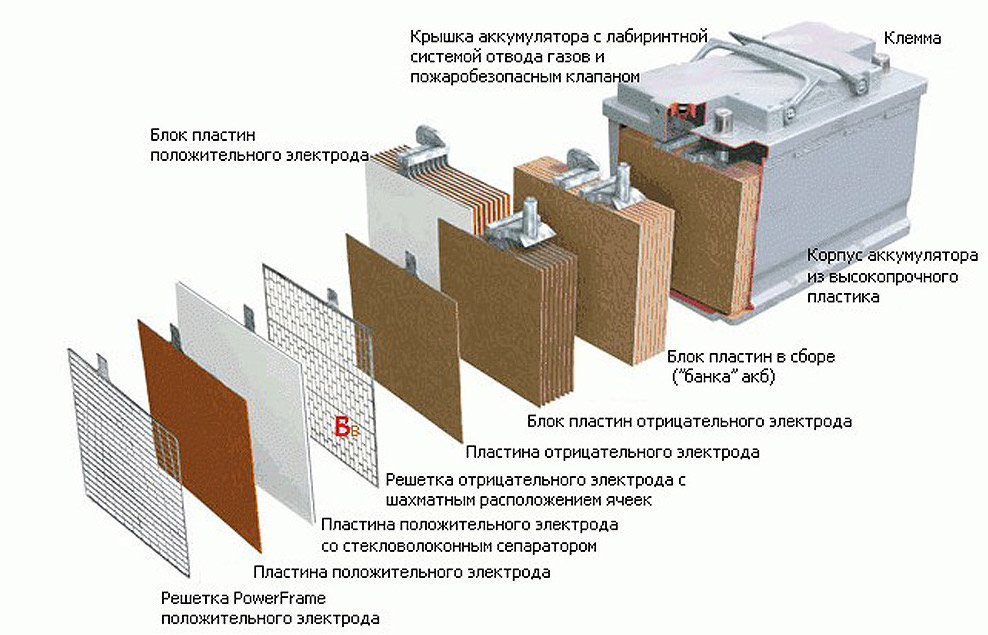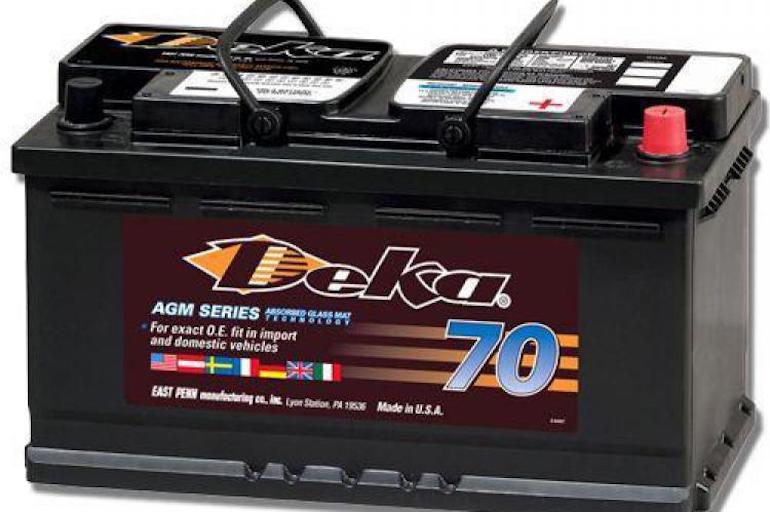
Gel battery for cars - pros and cons
A lot has changed in the history of the car in its device. New design solutions appeared that replaced obsolete elements. However, for many decades, evolution bypassed the source of on-board power supply - a lead-acid battery. There really was no urgent need for this, because the traditional battery has always fully met the requirements and its design is very simple.
However, today new gel-type batteries have become available to motorists. In some ways they are superior to their predecessor, and in some ways they are inferior.
Initially, gel batteries were created for the aerospace industry. This is due to the fact that the usual lead batteries are poorly adapted to work with rolls and rolls. There was a need to create a battery with a non-fluid electrolyte.

Gel battery features
The main feature of a gel battery is its electrolyte. Silicon dioxide is introduced into the composition of the sulfuric acid solution, which contributes to the fact that the liquid acquires a gel-like state. Such a feature, on the one hand, allows the electrolyte to remain in the same position regardless of the inclination of the battery, and on the other hand, the gel serves as a kind of damper that dampens vibration and shock.
The gel battery is characterized by zero gas emission. This is due to the doping of the negative plates with calcium. Thick electrolyte does not require free space between the plates to remove hydrogen.
Thanks to this, it is worth noting two advantages of the gel battery at once:
- Since the plates are placed between each other with a small gap, designers have the opportunity to reduce the size of the power supply, or increase its capacity.
- This feature makes it possible to make the battery case completely sealed. More precisely, it is practically sealed: all battery banks are equipped with valves, which are always closed under normal conditions, but when recharging, gas escapes through them. This approach protects the body from destruction during increased gas formation.
Advantages
Of course, for a simple driver of a car, the ability of the battery to work properly with any angle of inclination is an inconspicuous plus. However, the gel battery has other advantages besides this.
The main requirement of most drivers for a battery is the ability to work with a deep discharge. In traditional lead-acid counterparts, when the voltage in the bank is reduced to a minimum level, lead sulfate is formed on the plates. This reduces the density of the electrolyte, and a white coating appears on the plates. In this case, the battery cannot be charged by a conventional automatic device: the current consumed by it is negligible for the device to determine the connected load. In such a situation, the battery needs to be “revitalized” with powerful current pulses that heat up the electrolyte and start the breakdown of sulfate.

However, if a conventional battery has been critically discharged, it is almost impossible to completely restore it. In the battery, the capacity and current output are significantly reduced, large sulfate particles that have precipitated irreversibly contribute to the destruction of the plates.
The vodi.su portal draws your attention to the fact that sulfation is almost absent in a gel battery. Such a power source can be discharged to zero, and it will still be fully charged without problems. This is a very tangible plus for motorists when the car has to be started on its “last breath”.
Another advantage is that there are no gas bubbles on the gel battery plates. This significantly increases the contact of the plate with the electrolyte and increases the current output of the battery.
On the Internet, you can see videos where, with the help of a motorcycle gel battery, the engine of a passenger car is started. This is because the surge current of a gel power supply is much higher than that of a conventional one.
The resource of the gel battery is quite large. The average battery can withstand 350 full discharge cycles, about 550 half discharge cycles, and over 1200 discharge cycles to 30%.
Disadvantages
Due to the design features, gel batteries require certain charge modes. If in a traditional power source there is no critical difference in excess of the charging current, for example, in cases where the relay-regulator is faulty, then this situation will be fatal for the gel analog.

At the same time, significant gas formation occurs in the battery case. Bubbles are retained in the gel, reducing the area of contact with the plate. In the end, the valves open, and the excess pressure comes out, but the battery will not restore its previous performance.
For this reason, such batteries are not recommended for older vehicles. In addition, even in some modern cars, where the charge is regulated by the on-board computer, its current can be sharply increased when the motor is started.
Also, a significant drawback of the gel battery is its significantly high cost compared to conventional lead-acid batteries.
Loading…
